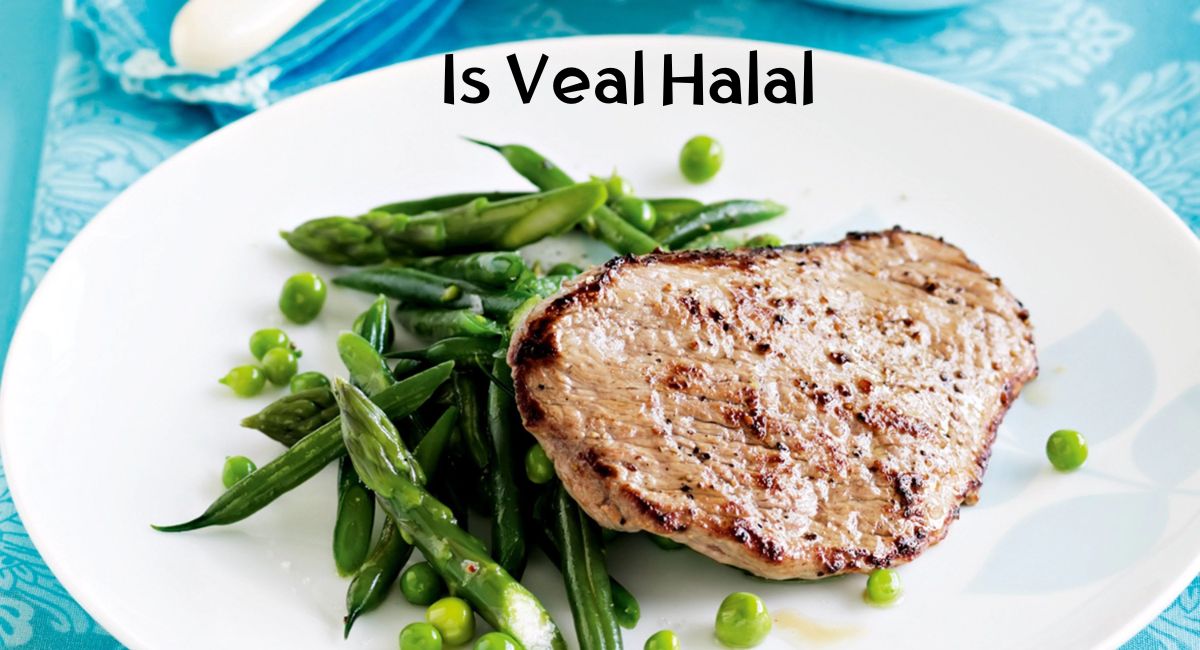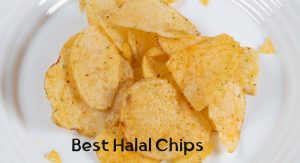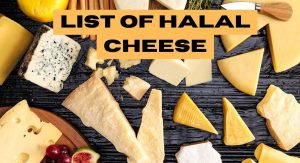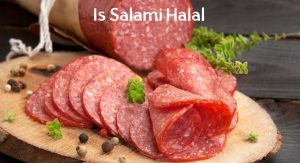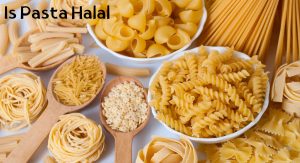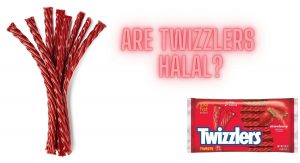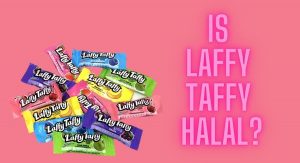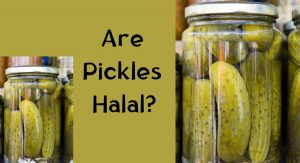Veal is a popular meat commonly consumed by people all over the world. However, many Muslims often wonder whether or not it is halal to consume veal.
With this in mind, it is essential to explore whether veal is halal or not. In this blog post, we will delve into the question of whether veal is halal, and we will examine the factors that determine whether this popular meat is permissible for Muslims to consume.
By understanding the rules and regulations surrounding halal food, Muslims can make informed decisions about what they eat and can ensure that they are following their faith in the best way possible.
What is Veal and How is it Produced?
Veal is a type of meat that comes from calves, usually between six to eight months old, although sometimes far younger. They belong to the Holstein-Friesian breed of cattle and are male, as they cannot produce milk.
Veal is considered to be a delicacy because of its tender texture and mild flavor. It is often used in gourmet cooking and is a staple of many high-end restaurants.
It is a popular cut of meat in Europe, but its consumption has declined in the United States and the United Kingdom since the 1960s due to its reputation for being exceptionally cruel.
Many aspects of veal production result in animal suffering, and even though some reforms have been made, the image persists.
- Veal production involves separating the calves from their mothers immediately after birth, which is highly traumatic for both mother and calf.
- Veal is often made from dairy calves sold to be slaughtered for meat.
- Bob veal is meat from calves as young as two hours to a month old, and Slink veal is the youngest possible veal harvested from stillborn or unborn calves.
The conditions under which cows are raised and slaughtered for veal have led many to consider it inhumane.
This meat is produced by slaughtering young male calves that are not needed for breeding purposes. These calves are typically slaughtered when they are between one and six months old, depending on the breed. The meat is then processed and sold to consumers.
The way in which veal is produced has been the subject of much debate in recent years. Some animal rights activists argue that the conditions in which veal calves are raised and slaughtered are cruel and inhumane. However, others argue that veal can be produced in an ethical and humane manner, as long as the animals are treated well and slaughtered in a humane way.
Is Veal Halal?
The debate on veal revolves around its halal status and ethical considerations. Some Muslims believe that veal is halal because it is slaughtered according to Islamic law, while others argue that the way it is produced makes it haram.
According to Islamic law, any meat that is not slaughtered in the prescribed manner (zabihah or dhabiha) is considered haram. However, if the slaughtering has been performed according to Islamic conditions, then there is no problem with eating veal.
The meat of a calf is considered halal as long as the animal is alive and healthy at the time of slaughter, and the person carrying out the slaughter is a Muslim or follows the Ahl al-Kitab.
The calf being too young or being confined in a cage does not make it haram to slaughter and eat.
However, some Muslims choose not to consume veal due to ethical considerations. They argue that the way veal is produced is inhumane and not healthy for the animal. Calves are often separated from their mothers at a young age and confined in small cages, leading to health problems and suffering.
Ultimately, it is up to the individual to decide whether or not to consume veal, as the halal status is contingent upon the Islamic slaughtering conditions being met.
Debunking Common Misconceptions About Veal Being Haram
There are several misconceptions surrounding the consumption of veal and its status in Islamic dietary guidelines. Many people often assume that veal is haram, or forbidden, in Islam due to the methods used for raising and slaughtering young calves for meat. However, this belief is not entirely accurate.
The permissibility of veal ultimately depends on how it is raised and slaughtered, which must adhere to halal standards. While some animal welfare organizations may raise concerns about the treatment of calves in certain farming practices, it is possible for veal to be ethically and halal-ly produced.
It is important to note that halal guidelines ensure that animals are treated humanely and with respect throughout their lives, and the slaughtering process is quick and painless. Therefore, the consumption of veal is not inherently haram and can be enjoyed so long as it is produced in accordance with Islamic dietary laws.
Ethics of Eating Veal: Different Perspectives
The ethical issues surrounding the consumption of veal have been a contentious topic for decades, with various perspectives on the matter. Animal rights activists view veal production as cruel and inhumane, given the cramped conditions and mistreatment of calves during their short lives.
On the other hand, proponents of veal argue that it is a natural part of the food chain and a reflection of cultural traditions. The debate centers on the treatment of animals and whether it is acceptable to cause them pain and suffering for human consumption.
Ultimately, the decision to consume veal if it aligns with an individual’s values and principles is a personal choice, but awareness of the production process is crucial in making an informed decision.
It is essential to note that mainstream veal production methods are not sustainable, and widespread adoption of more humane practices is imperative to mitigate animal suffering.
The question of ethical eating extends beyond the confines of veal production and encompasses the food industry at large, prompting individuals and society to reevaluate their consumption habits and prioritize the well-being of animals.
Why is Veal More Expensive than Beef?
Veal is known to be more expensive than beef due to various reasons.
Firstly, the short rearing period for veal, which lasts only around 4-5 months, results in a smaller supply and production window. This shortened period accounts for the high cost of rearing and feeding the calves.
Additionally, the production of veal is often looked down upon by animal welfare groups due to the traditional practice of removing newborn calves from their mothers and confining them in small crates.
In response, farmers have had to adopt more ethical and humane methods of rearing the calves, which can increase production costs even further. Ultimately, with its limited supply, ethical concerns, and high production costs, it’s no surprise that veal demands a higher price point than its beef counterpart.
Veal vs. Beef, Lamb, Chicken, and Fish
Veal is a type of meat that is often compared to beef, lamb, chicken, and fish. Here is a brief comparison of the nutritional value and taste of these meats.
Nutritional Value
| Meat | Characteristics | Nutritional Value |
|---|---|---|
| Veal | Lean meat, low in fat and calories. Good source of protein, iron, and vitamin B12. | Protein, Iron, Vitamin B12 |
| Beef | Good source of protein, iron, and vitamin B12. Higher in fat and calories than veal. | Protein, Iron, Vitamin B12 |
| Lamb | Similar to beef in nutritional value but has a stronger, gamier taste. | Protein, Iron, Vitamin B12 |
| Chicken | Lean meat, low in fat and calories. Good source of protein and vitamin B12. | Protein, Vitamin B12 |
| Fish | Lean meat, low in fat and calories. Good source of protein and omega-3 fatty acids. | Protein, Omega-3 Fatty Acids |
Taste
| Meat | Flavor | Cooking Options |
|---|---|---|
| Veal | Mild and delicate | Often described as tender and juicy |
| Beef | Robust and beefy | Can be cooked to different degrees of doneness |
| Lamb | Strong and gamy | Often used in Mediterranean and Middle Eastern cuisine |
| Chicken | Mild and slightly sweet | Can be cooked in a variety of ways |
| Fish | Mild and slightly sweet | Can be cooked in many different ways depending on the type of fish |
Cooking Methods
| Meat | Cooking methods | Common dishes |
|---|---|---|
| Veal | Grilling, roasting, braising | Veal chops, Osso Bucco, Veal scaloppine |
| Beef | Grilling, roasting, braising | Steaks, burgers, pot roast, beef stew |
| Lamb | Grilling, roasting, stewing, braising | Rack of lamb, lamb chops, lamb shank, lamb stew |
| Chicken | Roasting, grilling, frying, soups and stews | Fried chicken, chicken soup, roasted chicken |
| Fish | Grilling, baking, frying, poaching, sauces and seasonings | Grilled salmon, fried fish and chips, baked tilapia |
Halal Status
| Meat | Halal Status | Slaughtering Requirements |
|---|---|---|
| Veal | Halal if slaughtered according to Islamic dietary laws | – |
| Beef | Halal if slaughtered according to Islamic dietary laws | – |
| Lamb | Halal if slaughtered according to Islamic dietary laws | – |
| Chicken | Halal if slaughtered according to Islamic dietary laws | Cut throat with a sharp knife |
| Fish | Halal if slaughtered according to Islamic dietary laws | Caught alive, cut throat or spinal cord |
Comparison with Kosher Meat
Veal and kosher meat are both types of meat that have specific religious standards for their consumption. While veal is not halal, it is interesting to compare the religious requirements for veal and kosher meat.
Kosher meat must be slaughtered by a shochet, a specially trained Jewish person who is knowledgeable in the laws of shechita, the ritual slaughter of animals. The shochet must use a very sharp knife to make a swift, deep, and continuous cut across the animal’s throat, which severs the trachea, esophagus, carotid arteries, and jugular veins. This method of slaughter is believed to be the most humane way of slaughtering animals, as it results in a quick and painless death.
Similarly, veal must also be slaughtered using humane methods. The veal industry has specific guidelines for the welfare of the animals, including how they are housed, fed, and transported. The slaughter of veal must also be done humanely, with the animal being stunned before being killed.
One significant difference between kosher meat and veal is that kosher meat must be soaked and salted to remove all traces of blood. This process is known as kashering and involves soaking the meat in water for 30 minutes and then salting it for an hour. This process is not required for veal.
Another difference between kosher meat and veal is the type of animals that are used. Kosher meat can only come from certain animals, including cows, sheep, goats, and deer, while veal comes from young calves.
Conclusion
Veal is considered halal in Islam as long as it is slaughtered according to Islamic law. The animal must be slaughtered using the prescribed method of dhabiha, and all the blood must be drained from the animal. As long as these conditions are met, veal is permissible for Muslims to consume.
However, some Muslims may choose not to consume veal due to ethical concerns related to the way the animals are raised. It is up to the individual to decide whether or not they want to consume veal based on their personal beliefs and values.
In the past, veal was seen as the poster child for animal cruelty, with baby animals tethered in small crates.
Fortunately, new practices and attentive chefs have brought about a change in the industry. Veal calves are now raised on small family-owned farms in larger group pens where they can move freely inside a barn or outdoors on pasture. Moreover, veal calves are not castrated, their tails are not docked nor are their horns removed.
The meat itself is more flavorful, leaner and healthier than beef, with less fat and cholesterol.
Read these comprehensive guides to know everything you need to know about the halal status of various livestock meats.
Are Frogs Halal: Discover whether consuming frog meat aligns with halal dietary guidelines. Learn about the considerations surrounding this unique culinary topic.
Is Beef Haram: Delve into the halal status of beef, a staple in many cuisines. Understand the principles that determine whether beef is permissible according to Islamic dietary laws.
Is Bison Meat Halal: Learn about the halal status of bison meat, a lean and flavorful alternative to traditional beef. Discover the intricacies of determining its permissibility in Islamic dietary practices.
Is Horse Halal: Investigate the controversial topic of horse meat in the context of halal dietary laws. Gain insights into the considerations and debates surrounding its permissibility.
Frequently Asked Questions
1. Is veal beef?
Veal is a type of meat that comes from young calves ranging in age from five days old to 35 weeks of age. While veal is technically meat from a young bovine, it is not the same as beef that comes from older cattle. Beef is the meat from fully-grown cattle that are more than two years old, while veal is the meat of young cattle that are less than three or four months old and are milk-fed calves.
2. Is veal banned in the US?
No, veal is not banned in the US. However, certain practices related to veal production have been banned in some states. For instance, veal crates have been banned in some states such as California, Arizona, Maine, and Massachusetts. Also, veal is produced from male dairy calves, which are of little or no value to the dairy farmer.
3. Is it ok to eat veal?
Yes, it is generally considered ok to eat veal. It is a good source of protein and essential minerals like potassium, phosphorus, and niacin. It is almost white in color and has a softer texture than beef. While some ethical objections to raising and eating veal exist, the production of veal has undergone changes in recent years due to legislation to address these issues. The USDA considers veal to be a safe food to eat when handled and cooked properly, just like any other meat.
4. Is veal pork?
No, veal is not pork. Veal is the meat from a calf or young beef animal, while pork comes from a pig. While both meats can be served in a variety of ways, including grilled, fried, or braised, they are not the same and have different nutritional profiles. Veal has more Vitamin B12, Vitamin B3, Zinc, and Vitamin B5 than pork, but pork is higher in Vitamin B1 and Selenium.
5. Is veal red meat?
Yes, veal is classified as red meat. Even though veal comes from young cattle and is processed before maturity, it is still considered red meat just like beef. Gastronomy distinguishes red meat as meat from adult mammals, including beef, horse, mutton, venison, boar, and hare, while young mammal meat like veal and lamb are sometimes considered white meat along with poultry and fish. While typical lean meat on a veal carcass has a grayish pink color, it is still classified as red meat.
